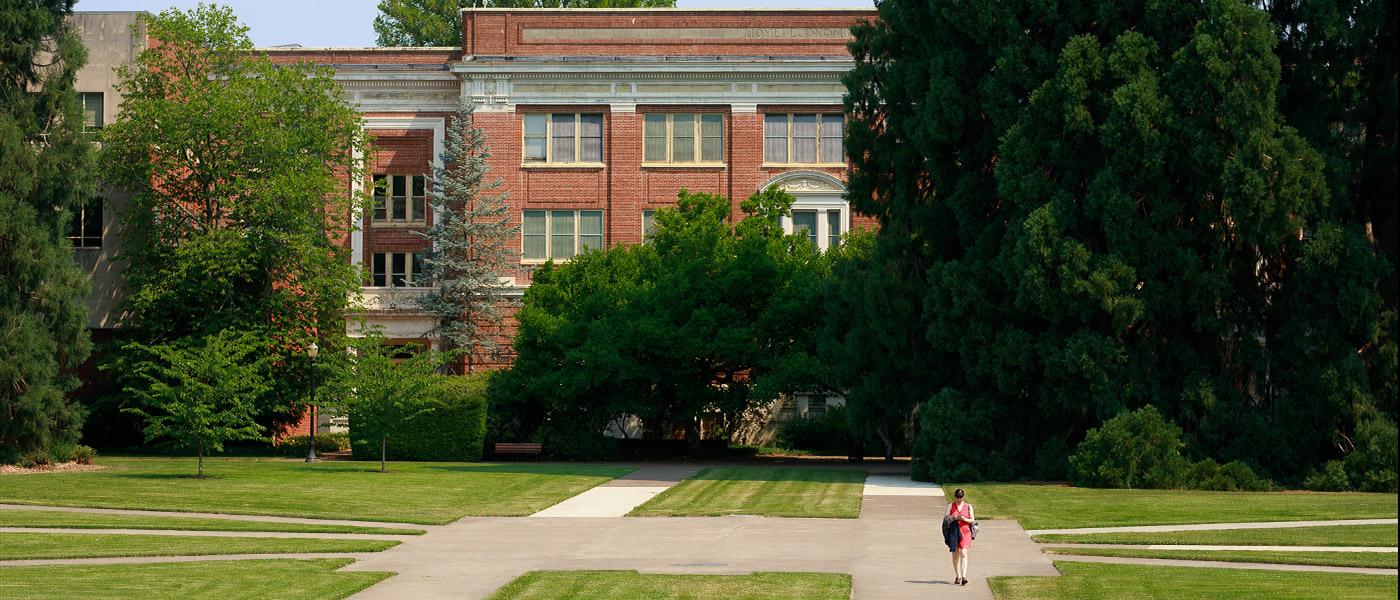Summer 2021 — Nothing can replace in-person interactions when it comes to enhancing learning and strengthening educational experiences. However, programs in the Division of Student Affairs are using new ways of interacting and engaging that will open up even more opportunities when students return to campus this fall.
“We learned a great deal during the pandemic,” says Janet Nishihara, executive director of the Educational Opportunities Program at Oregon State. “We want to utilize what we learned to improve and grow our services.”
Students are also facing challenges that now go far beyond adjusting to college life and increased academic work. Students have been dealing with new technologies, online fatigue, stress from working through the unknown, unexpected financial worries and health concerns. And if adapting to online learning wasn’t enough, it is happening amidst heightened awareness of the inequalities that plague our country.
“While the changes in our work in response to the pandemic were overwhelming, the work we were able to take on in relation to Black Lives Matter, Stop Asian Hate and in recognition of other national issues we deal with everyday certainly grew,” Nishihara says.
Since campus closed suddenly near the end of winter term 2020, meetings and events have been happening mostly online. Even though it increases access, virtual programming also has disadvantages. For example, it is easier to extend hours for greater flexibility, but making the personal connections essential for a strong relationship isn’t the same. With fall term preparations underway, departments anticipate a mix of in-person and remote service options to support and reach the most students.
Currently, EOP staff are transitioning back to working in Waldo Hall, starting with renewed access to the main office and the student computer lab. “Our goal is to have complete coverage for in-person and options for virtual connections,” Nishihara says.
EOP is also investigating ways to merge virtual and in-person interactions.
“We hope that we can continue to support students using what we learned during the pandemic and to grow and develop new ways to provide timely personal and academic support,” Nishihara says.
The Academic Success Center plans to resume in-person services in the fall in addition to continuing some remote delivery options. “We are mindful that we’ve learned a lot this past year, including the benefits that remote delivery can offer,” says Marjorie Coffey, assistant director of the Academic Success Center and Writing Center.
Students were already able to connect with the ASC by phone, email and text. New to this year were Zoom conversations and a live chat feature on the website, offering students additional connection points. Remote facilitation of workshops offers an example of some of the benefits of remote delivery options. Students could share their ideas synchronously in the chat and use polls, reactions and annotations to engage with other students.
“We know that it can be challenging to speak up in a large group,” Coffey says. “For some students, remote workshops made it easier to participate and to share their experiences and perspectives with other students.
Some students prefer remote services, given their location, schedule or range of commitments, while others are planning primarily on connecting in person during fall term. “We individualize our support to meet each student’s unique experience and needs,” says Sarah Norek, ASC outreach and education coordinator. “We will be working with our campus partners to validate students’ experiences and to equip students with strategies and tools that can support their coursework and their well-being.”
The ASC anticipates an even larger number students arriving on campus for the first time and is planning additional orientation sessions and support for second-year students, as well as first-year students. “We know a lot of students are excited to be back in person for fall, and we also recognize that for some students, that transition may come with apprehension and uneasiness,” says Clare Creighton, director of the ASC and Writing Center. She notes that giving students a choice in how they access support can be empowering. “Our mission is to help students adapt during times of transition,” Creighton says. “In many ways, we are built for this.”
